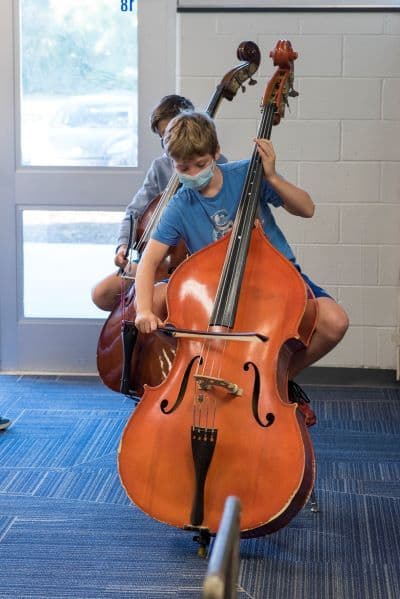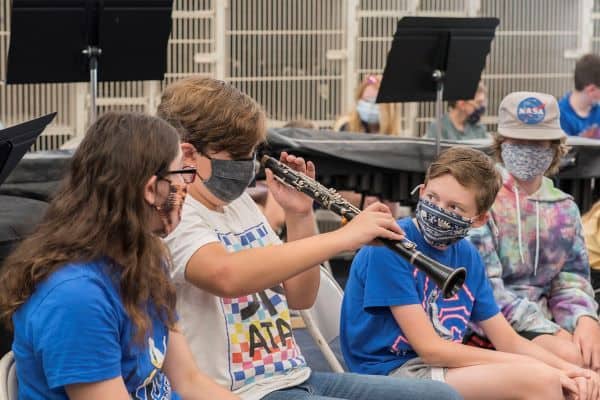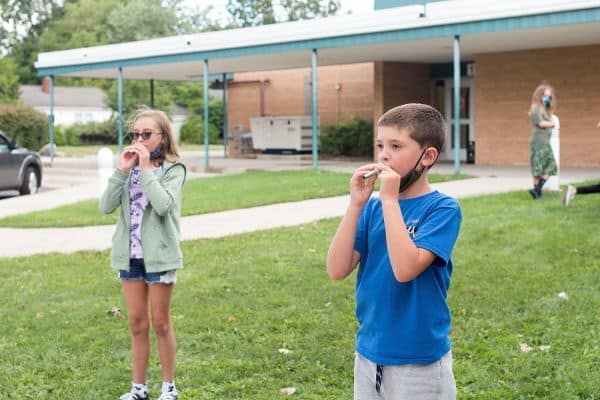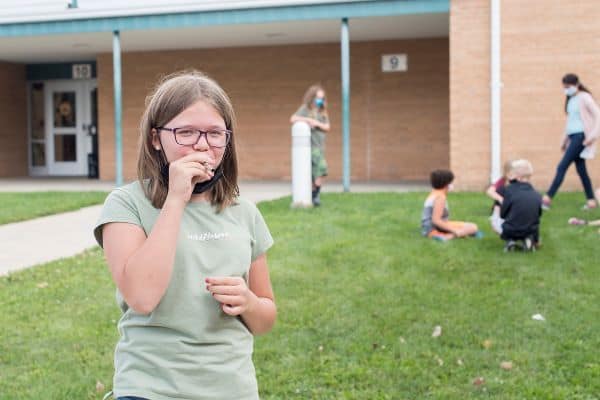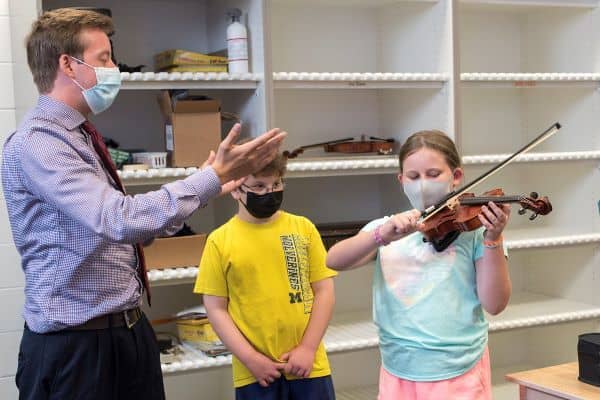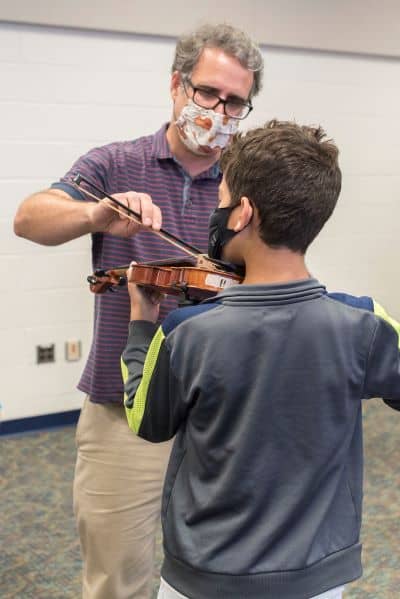By Crystal Hayduk, photos by Lynn Harris.
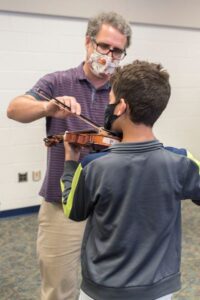
Sixth graders at Beach Middle School (BMS) began attending daily music classes this year, just like other sixth grade students before them. But this is the first time they are just now choosing their music specialty after a year of learning fifth-grade musical concepts using ukuleles instead of through choir, band, or orchestra instruments, said Katy Steklac, director of bands at South Meadows Elementary (SME) and BMS.
“Teaching ukulele was a practical alternative because it does not involve the respiratory system to play and it is conducive to teaching virtually,” said Andrea Miller, choir teacher at SME and BMS.
Chelsea School District’s (CSD) music teachers were especially busy in September—introducing the three specialty music areas of choir, band, and orchestra to fifth graders as usual, but also catching up sixth graders who missed the opportunity in 2020 due to COVID-19 pandemic limitations.
In a normal school year, fifth graders transition from gathering once a week for general music education to twice a week in the area of their choice. During the first few weeks of school, students attend trial sessions in choir, band, and orchestra in preparation for choosing the area they are most interested in pursuing.
But the 2020-21 school year was not normal. Yet, teachers and students have been facing the challenges to music education brought on by pandemic response with versatility and enthusiasm. Nathan Peters, BMS orchestra director, said ukulele music instruction meant the music teachers worked together to create a new curriculum, obtained a grant to purchase an instrument for each student’s use, and coordinated virtual classes and concerts. Students learned to play beginning ukulele, sang along, and began to learn musical notation.
Teachers discovered iPad apps and programs that will continue to be beneficial in the future: a sightreading program, a music composition program, and a video recording app that allows students to record and submit their performance assignments, said Miller.
Choir students participate in ice breakers and team building activities that help to increase their comfort level to sing with peers. “…Singing is inherently very personal and it is difficult for most beginners to do with confidence,” said Miller. Masks muffle smaller voices, so students continue to work on projecting and communicating words clearly.
Steklac said the music teachers got to know the students and their personalities through working with them regularly last year. Identifying students’ strengths and needs helps teachers guide them to their best-fitting ensemble, and allows the teachers to plan the most effective instruction for this year.
Through CSD music education, students learn lifelong music appreciation through performance. “Performing music in an ensemble has a strong impact on the cultural understanding of the student and on learning the art of collaboration,” said Peters.
“These kids have been waiting a long time to transition to these ensembles,” said Steklac. “The excitement level is high, and they are working so hard to learn something brand new. It is such a joy to work with them every day.”





